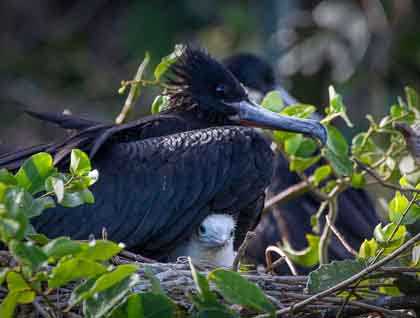This morning we accomplished our longest sail of the trip, departing from Coiba Island at noon to cover 190 nautical miles to finally reach the Gulf of Panama. This big gulf possess one of the richest upwellings in the region created by strong winds known as trade winds, the same winds that help Columbus across the Atlantic.
What happened is that the trade winds that usually bring humidity to the Caribbean coast get stronger at this time of year and managed to blow across the continental divide. When they cross the divide they lost their humidity on the Caribbean side but not their strength, so they blow through the Pacific side removing humidity and triggering the dry season for this region. Here in the Gulf of Panama the continental divide is low enough to let the winds blow across and arrive at the gulf with enough power to remove the surface sterile waters, and let it be replaced by cool nutrient-rich water from the bottom of the gulf. The combination of nutrient rich water up to the surface and sunlight are perfect for the explosion of marine life. Plankton blooms in the waters and this will attract all kind of fish and sea birds to the gulf.
After breakfast we took expedition landing craft cruises around one of the main islands in the gulf to observe sea bird colonies that come here for the upwelling supply. Indeed we saw high numbers of brown boobies, blue-footed boobies, and brown pelicans—some of them even nesting!
Once back on board the ship and on our way to the Panama Canal we managed to do one more landing before our transit to the Panama Canal. The nice picturesque island called Taboga welcomed us where we were able to take a nice walk through the village and visit the small church.
To end our perfect day we started our transit of the Panama Canal on the Pacific side as our grand finale.









